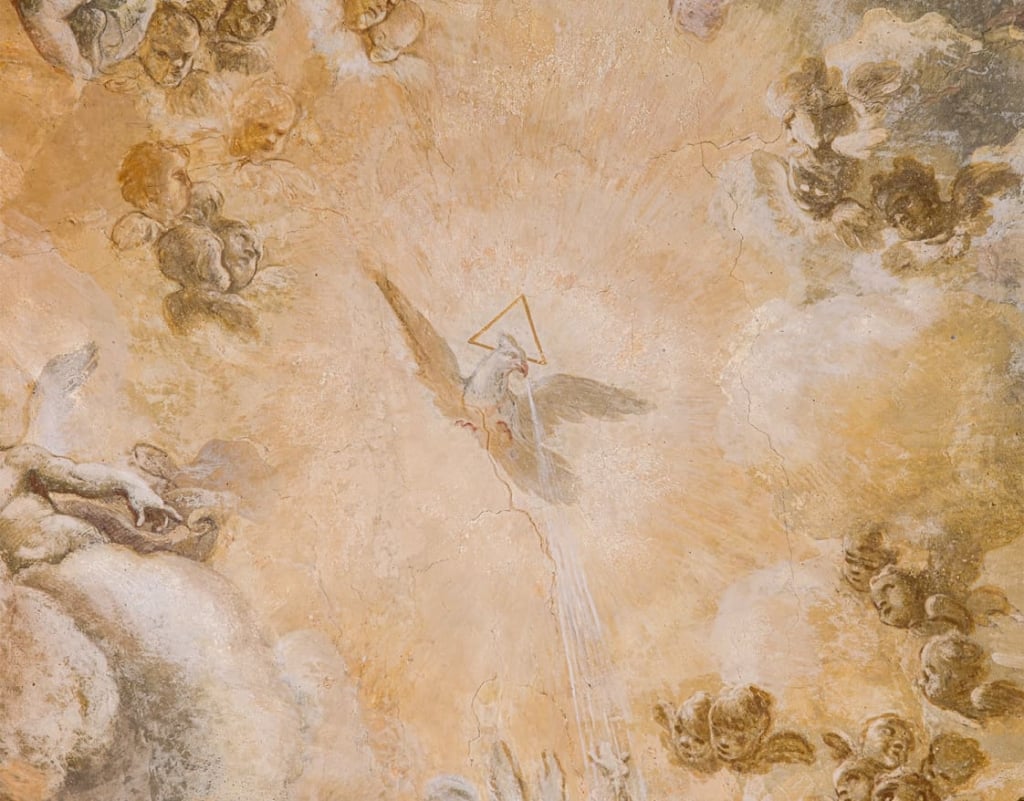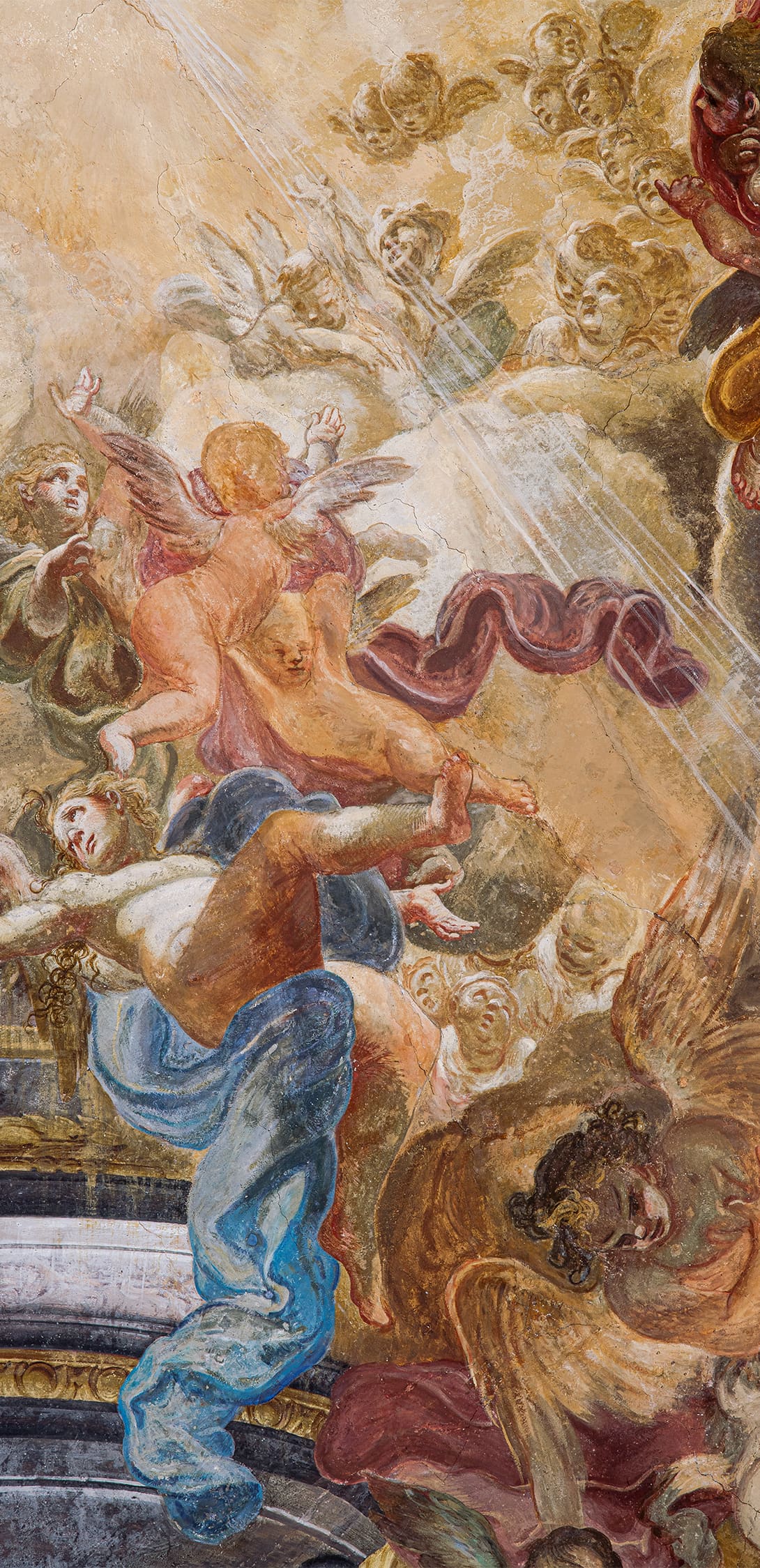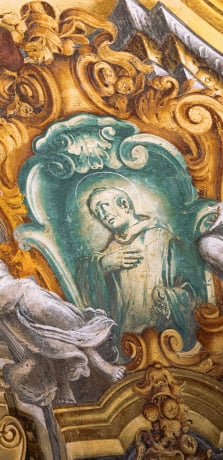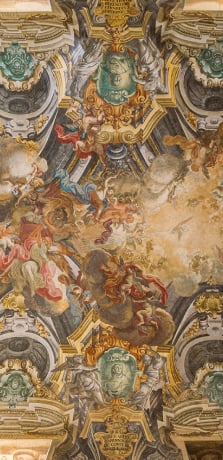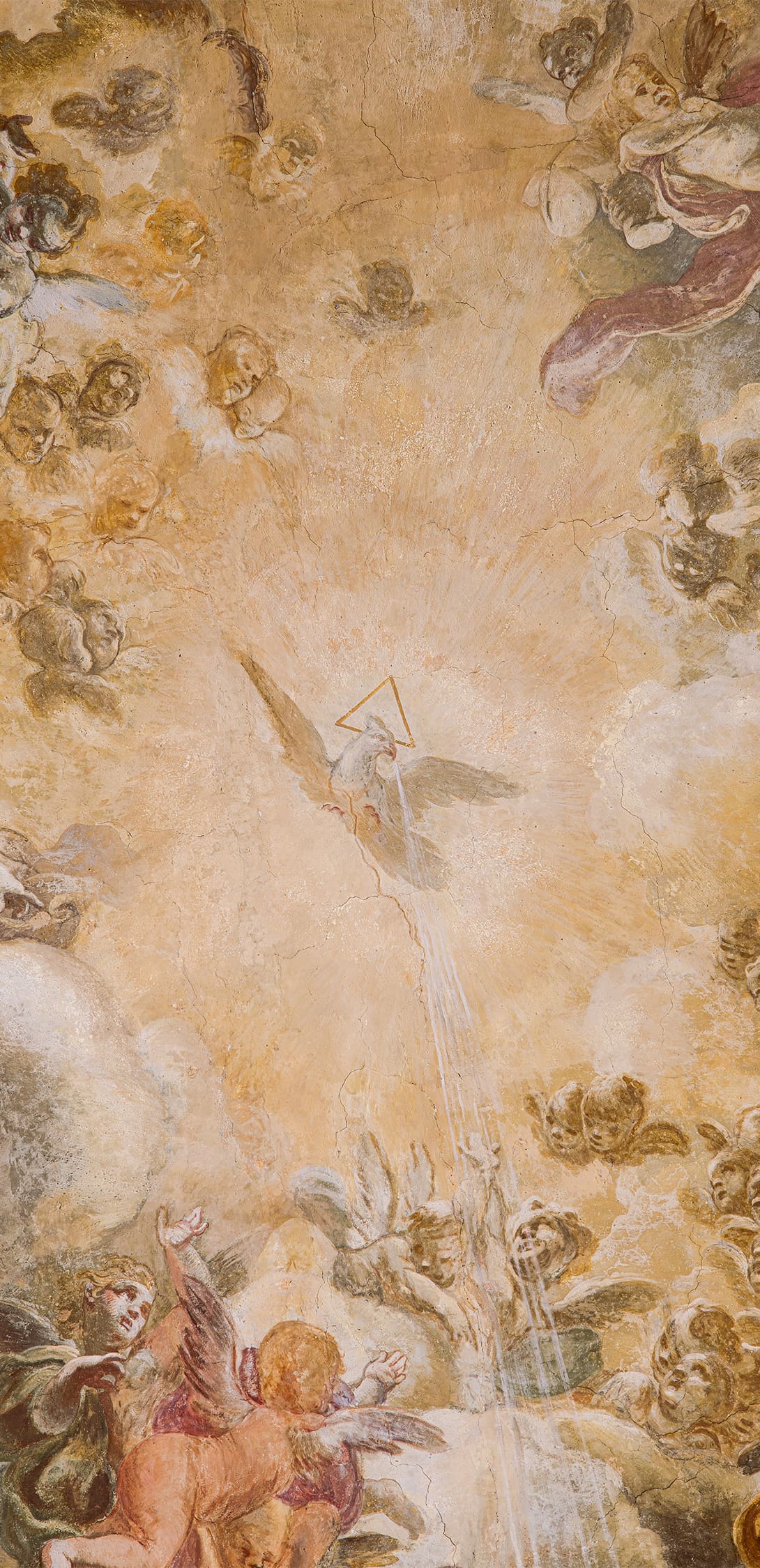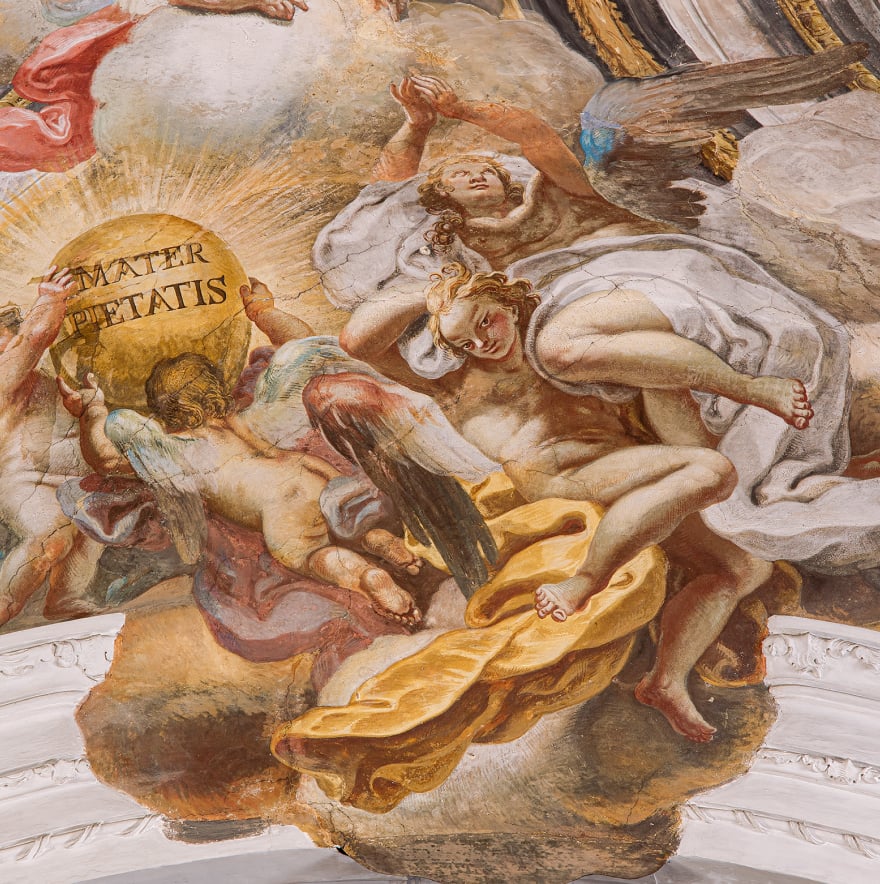
THE ‘GLORY OF PARADISE’ CELEBRATING THE FAMILY LINE
Signed and dated by Francesco Maria Russo, the fresco – known as the Glory of Heaven or the di Sangro Paradise – is one of the first works that the Prince of Sansevero commissioned for the Chapel. We have little information about the artist, but archive sources confirm that Russo had already come into contact with di Sangro in 1743, when – under the direction of the Prince – he had frescoed the ante-sacristy to the Chapel housing the Treasure of San Gennaro.
Remembering Solimena’s lessons, Russo shows his talent with an illusionistic layout of fanciful architecture, with sudden breaks in the clouds, with angels and figures converging at the centre. Here, in an explosion of light, the Holy Spirit, in the form of a dove, breaks forth, crowned with a triangular halo. All around, a series of windows illuminate the Glory of Heaven, and between the windows there are medallions with portraits of the saints of the di Sangro family. On the ceiling of the sanctuary is a small false dome which completes the scene Russo creates.



